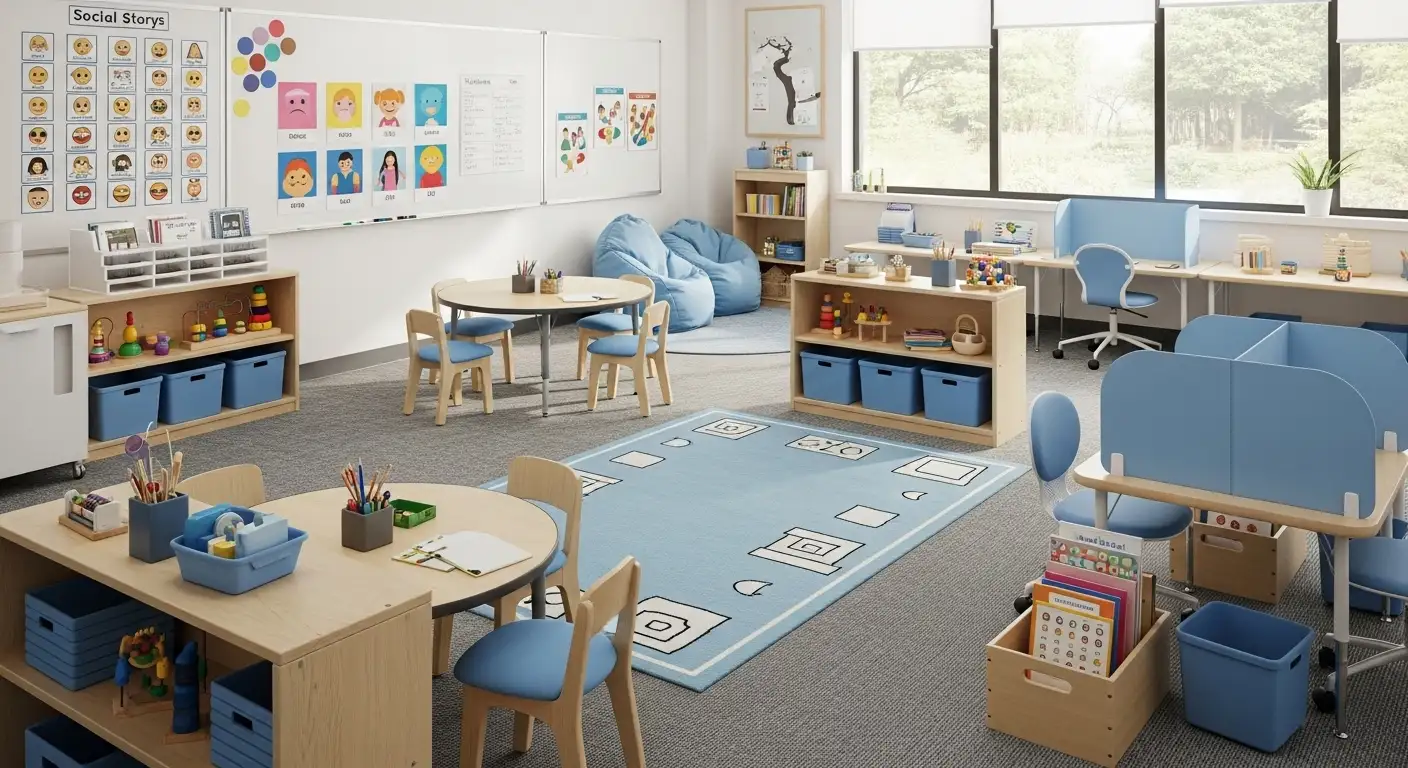Supporting Autistic Adults in Building Workplace Skills
Enhancing Employment Opportunities for Autistic Adults Through Targeted Skill Development

Understanding the Importance of Workplace Skills for Autistic Adults
Autistic adults often face unique challenges in securing and maintaining employment. Developing tailored workplace skills can significantly enhance their job prospects, independence, and quality of life. This article explores effective strategies and interventions designed to support autistic individuals in building essential workplace competencies, drawing on evidence-based therapies, vocational programs, and social skill development.
Applied Behavior Analysis (ABA) Therapy: Foundations and Role in Autism Treatment
What is Applied Behavior Analysis (ABA) therapy and how is it used in autism treatment?
Applied Behavior Analysis (ABA) therapy is a scientifically validated approach designed to improve socially meaningful behaviors in individuals with autism spectrum disorder (ASD). Its primary goal is to enhance skills critical to daily life, such as communication, social interaction, and self-care, while reducing behaviors that interfere with learning or functioning.
ABA relies on core principles of learning and behavior, particularly through techniques like behavior analysis and positive reinforcement. The therapy often uses the ABC model — Antecedent, Behavior, Consequence — to understand and modify behavior effectively. For example, a behavior analyst may observe what occurs before and after a behavior to determine triggers and rewards, then develop strategies to encourage desirable actions.
Programs are highly individualized. Qualified Board Certified Behavior Analysts (BCBAs) assess each person’s unique needs and tailor interventions accordingly. These programs can be implemented in diverse settings, including the home, school, or community environments, ensuring that learning happens naturally and meaningfully.
Early and intensive ABA interventions, particularly when started before age 4, have shown significant developmental improvements. Today's ABA therapy emphasizes engaging, naturalistic methods that not only increase functional skills but also respect the person’s preferences and promote independence. It moves beyond merely reducing problematic behaviors to fostering overall quality of life.
ABA therapy serves as a foundational component in supporting individuals with autism, equipping them with tools to succeed and thrive in everyday environments.
Professional Providers of ABA Therapy for Autistic Individuals
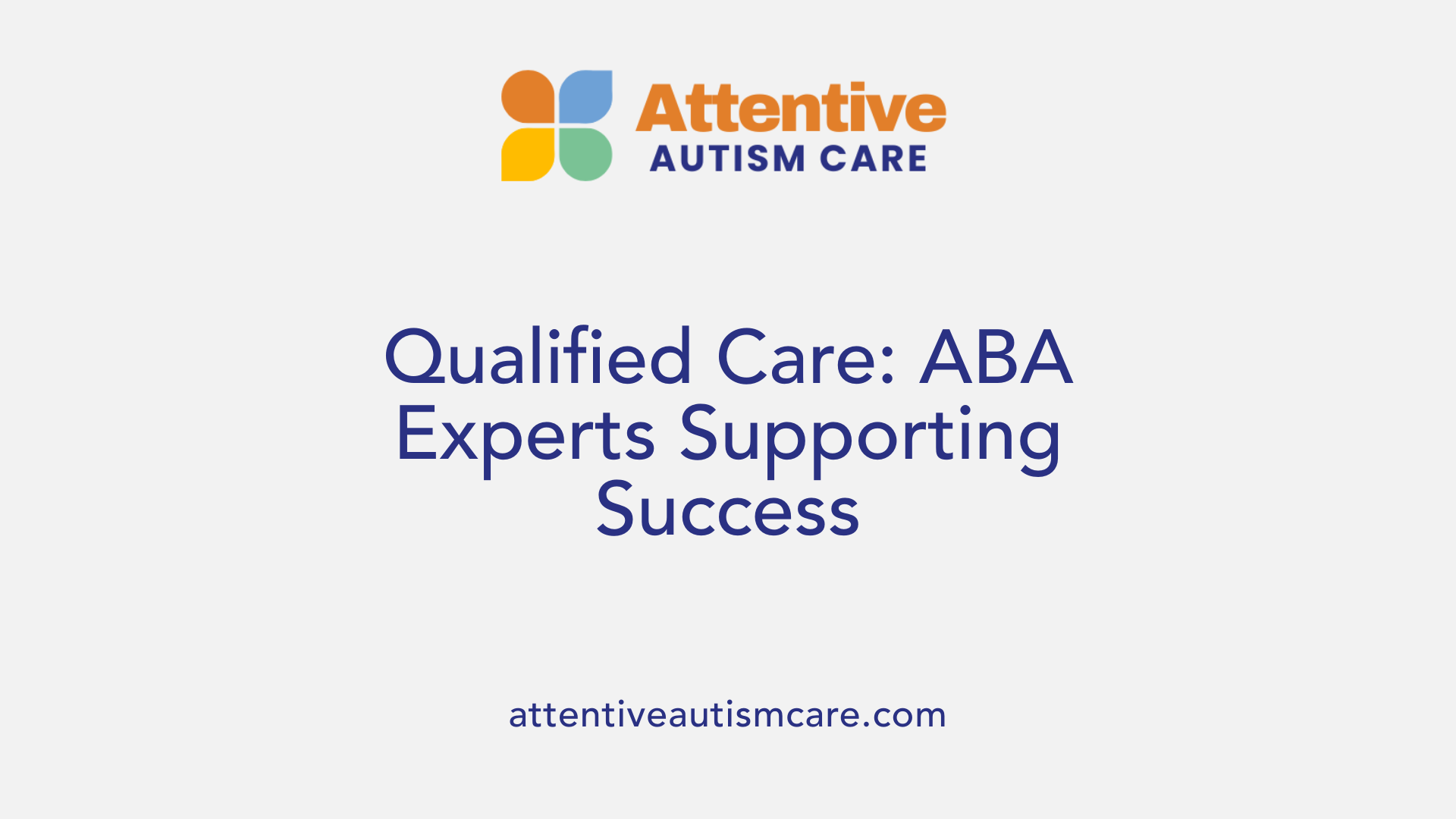
Who Typically Provides ABA Therapy for Individuals with Autism?
ABA therapy is delivered by a skilled team of professionals trained in applied behavior analysis and autism spectrum disorders. Core providers include Board Certified Behavior Analysts (BCBAs), Registered Behavior Technicians (RBTs), and behavioral therapists, each playing distinct roles in designing and implementing individualized treatment plans.
Roles of BCBAs, Registered Behavior Technicians, and Behavioral Therapists
- Board Certified Behavior Analysts (BCBAs): These specialists conduct assessments, develop customized treatment protocols, supervise implementation, and monitor progress.
- Registered Behavior Technicians (RBTs): Under BCBA supervision, RBTs implement daily therapy sessions, collecting data and delivering interventions directly.
- Behavioral Therapists: They often carry out one-on-one therapy, facilitate skill acquisition, and support clients in generalizing skills across environments.
Collaborative Approach Including Caregivers and Community
ABA therapy emphasizes a team-based methodology, where caregivers and community members actively participate. Involving parents, teachers, and other support personnel ensures consistency and reinforces skills across various settings, leading to better outcomes for the individual.
Example: Achieve Beyond’s Team Structure
Organizations such as Achieve Beyond employ motivated RBTs and BCBAs who provide evidence-based services across home, school, and community environments. Their integrated team approach fosters personalized and scientifically driven interventions tailored to each individual’s needs, maximizing developmental and functional gains.
Measuring and Evaluating Progress in ABA Therapy
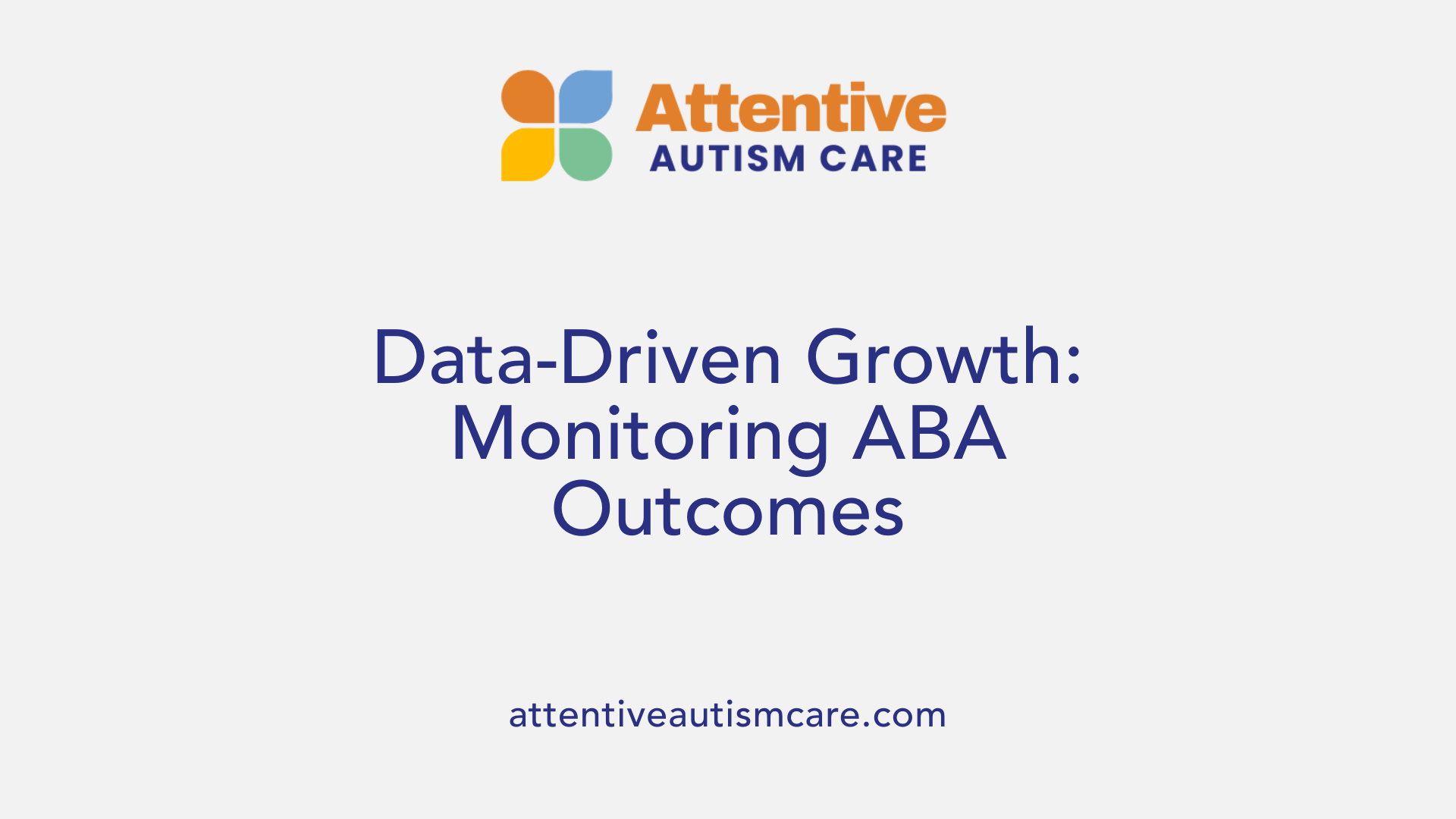
How is progress measured and evaluated in ABA therapy?
Progress in Applied Behavior Analysis (ABA) therapy is measured through continuous data collection methods tailored to track specific behaviors and skills over time. Therapists record the frequency and duration of targeted behaviors as well as responses, accuracy, and mastery of tasks during each session.
Continuous data collection methods
Data are gathered systematically during sessions to monitor how often and how long behaviors occur. This ongoing tracking ensures precise information about behavioral changes and skill acquisition.
Tracking behavior frequency, duration, and skill acquisition
Therapists use objective measures to track the number of times a behavior happens (frequency), how long it lasts (duration), and how well new skills are learned (accuracy). This granular data helps identify trends and areas needing adjustment.
Use of standardized assessments such as VB-MAPP and ABLLS-R
Standardized tools like the Verbal Behavior Milestones Assessment and Placement Program (VB-MAPP) and the Assessment of Basic Language and Learning Skills-Revised (ABLLS-R) are employed to evaluate developmental milestones and language skills. These provide benchmarks to set measurable goals and compare progress across domains.
Role of baseline data and regular assessments
Baseline data are collected at therapy onset to establish a clear starting point. Regular assessments—whether weekly, monthly, or quarterly—enable the comparison of ongoing progress to initial levels. This helps in adjusting intervention plans and ensuring generalization of skills across environments.
Importance of caregiver involvement
Active caregiver participation is crucial. Therapists maintain ongoing communication with parents and caregivers to reinforce learning and ensure skills are practiced at home and in other settings, which enhances overall therapy effectiveness.
Independent Living Programs: A Holistic Approach to Skill Development

What Are the Components of Independent Living Programs?
Independent living programs for people with autism offer a comprehensive set of services designed to support individuals in living and working successfully. These programs typically include education, life skills, vocational training, social and self-esteem development, and leisure activities. Each component is tailored to address the unique needs of the individual, promoting autonomy and community integration.
How Do Education and Life Skills Training Contribute?
The education segment may include curriculum-based instruction, community experiences, functional academics, and the use of assistive technology. Some programs connect participants to post-secondary educational institutions, further supporting their academic growth.
Life skills training focuses on practical, hands-on instruction in areas such as money management, cooking, shopping, organization, and transportation. This training often happens in natural environments to provide real-world experiences.
What Role Does Vocational Training Play?
Vocational training incorporates real-world work experiences and job coaching, emphasizing soft skills development and individualized job placements. These efforts aim to bolster both employment opportunities and self-esteem for participants.
How Are Social, Self-Esteem, and Leisure Activities Addressed?
Social and self-esteem components work on enhancing social skills, understanding social cues, building relationships, and boosting confidence through counseling, peer support, and group activities.
Leisure activities are tailored to develop decision-making, encourage recreational participation, and promote physical involvement. These activities help engage individuals in their communities and enrich personal enjoyment.
Overall, independent living programs use a highly customized approach that recognizes and adapts to each individual's strengths and needs, supporting their successful navigation of daily living and employment environments.
Educational Components Tailored for Autistic Adults
Curriculum-based instruction and functional academics
Independent Living Programs for autistic adults incorporate curriculum-based instruction that focuses on practical, functional academics. This approach ensures that learning is relevant to everyday tasks and promotes skills that support independence, such as literacy, numeracy, and problem-solving tailored to real-life scenarios.
Community experiences and assistive technology
Programs emphasize community-based learning experiences, allowing individuals to practice skills in natural settings. Assistive technology is also integrated to support communication and learning needs, enhancing accessibility and enabling greater participation in educational activities.
Connections to post-secondary institutions
Some independent living programs build collaborations with post-secondary institutions. These partnerships create pathways for continued education, vocational training, and social development, expanding opportunities for autistic adults to pursue higher education and skill advancement.
Supporting lifelong learning and adaptive functioning
Educational components in these programs are designed not only to address immediate training needs but also to foster lifelong learning and adaptive functioning. This ongoing education helps individuals maintain and build upon their skills in evolving environments, supporting sustained independence and quality of life.
Life Skills Training: Preparing Autistic Adults for Everyday Independence
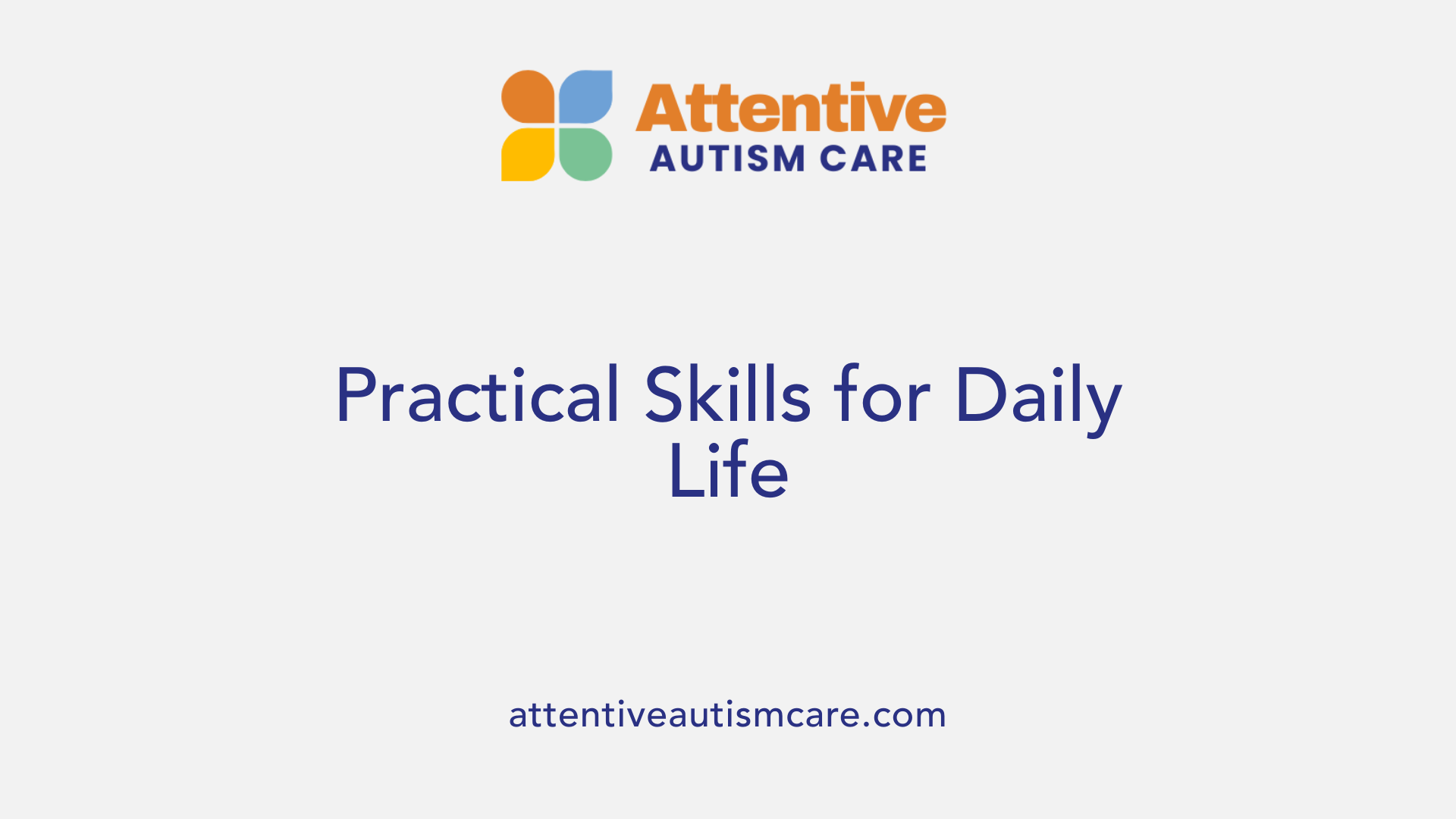
What Does Hands-on and Incremental Instruction Entail?
Life skills training for autistic adults focuses on hands-on, step-by-step learning methods. This approach breaks down complex tasks into manageable steps, allowing individuals to practice skills gradually and gain mastery. By directly engaging with real-life activities, trainees build competence and reduce anxiety associated with new routines.
Which Everyday Skills Are Included?
Core areas of life skills training typically include:
- Money management: Learning to budget, handle cash, and use banking tools.
- Cooking: Preparing meals safely and independently.
- Shopping: Making lists, navigating stores, and making purchases.
- Organization: Maintaining personal space and using planners.
- Transportation: Using public transit or other travel methods for mobility. These skills are tailored individually to meet diverse needs and abilities.
Why Is Training in Natural Environments Important?
Teaching skills within real-world settings, such as grocery stores or public transportation systems, enhances generalization and confidence. Practicing in natural environments prepares autistic adults to navigate the complexities of daily life more effectively than simulated scenarios alone.
How Does Life Skills Training Build Confidence?
By mastering practical, meaningful skills, individuals gain autonomy and self-assurance. As they accomplish tasks independently, their self-esteem improves, motivating continued growth. Life skills training thus serves not only functional needs but also emotional and social development.
Overall, life skills training is a foundational component in autism independent living programs, equipping adults with the tools needed for successful, fulfilling lives within their communities.
Vocational Training: Real-World Employment Preparation
Work experiences in community businesses
Vocational training programs for individuals with autism place a strong emphasis on real-world work experiences within community businesses. For example, Project SEARCH offers a 9-month internship model embedded directly in local businesses. This hands-on approach allows participants to gain practical skills in authentic environments, enhancing their readiness for competitive employment.
Job coaching and soft skills development
In addition to on-the-job training, these programs provide job coaching tailored to the unique needs of individuals with autism. Coaches help develop vital soft skills such as communication, time management, and problem-solving. These skills, often overlooked in traditional training, are crucial for maintaining employment and navigating workplace social dynamics.
Individualized job placements
Vocational training programs prioritize individualized job placements that consider each person's strengths, preferences, and support requirements. This customization ensures that job roles align with the capabilities and interests of participants, increasing job retention and satisfaction. Supports such as applied behavior analysis (ABA) strategies may be integrated to further enhance success.
Impact on employment and self-esteem
Evidence from randomized controlled trials indicates that participation in programs like Project SEARCH significantly improves employment rates among youth and adults with autism. Not only do these opportunities foster job acquisition, but they also boost self-esteem by promoting independence and community engagement. The combination of skill-building and meaningful employment experiences contributes to improved overall well-being for participants.
Social and Self-Esteem Development within Employment Programs
Developing social skills and understanding social cues
Employment programs for individuals with autism spectrum disorder (ASD) prioritize the enhancement of social skills critical for workplace success. These initiatives teach participants to recognize and interpret social cues, a foundational skill that facilitates smoother interpersonal interactions and professional communication.
Building relationships and peer support
To foster a supportive work environment, programs promote relationship-building among peers. Structured activities encourage social connections, helping participants establish networks that offer both emotional support and practical workplace assistance.
Counseling and behavioral plans to enhance self-confidence
Counseling services integrated into these programs focus on boosting self-esteem and managing social anxieties. Customized behavioral plans tailored to individual needs help participants navigate challenges, ultimately increasing their confidence in social and work settings.
Group activities and social engagement
Group-based activities form a core component of social development, providing safe spaces for practicing newly acquired skills. These engagements not only enhance social interaction but also prepare individuals for realistic work scenarios, encouraging community involvement and personal growth.
Leisure Activities: Promoting Decision-Making and Community Engagement
How do leisure activities support recreational decision-making skills?
Leisure activities in independent living programs are carefully designed to teach individuals with autism spectrum disorder how to make choices about their free time. By providing structured opportunities to select preferred activities, these programs foster essential decision-making skills. Individuals learn to evaluate options and understand the consequences of their choices, helping them gain autonomy and confidence.
What types of leisure options and physical activities are offered?
Programs include a diverse range of recreational opportunities tailored to personal interests and abilities. Choices may include sports, art, music, group outings, or solo pursuits. Physical activities are emphasized not only for health benefits but also to promote social interaction and engagement within the community. This variety ensures that everyone can find enjoyable and meaningful ways to spend their leisure time.
How do these activities encourage personal enjoyment and participation?
By focusing on activities that match each individual's preferences, the programs encourage active participation and sustained involvement. This personalized approach helps cultivate intrinsic motivation and satisfaction. Additionally, leisure activities serve as a context to build social skills and self-esteem, enhancing overall wellbeing.
In what ways do leisure programs foster community integration?
Engaging in community-based recreational activities helps individuals with ASD build social networks and develop a sense of belonging. Shared leisure experiences provide natural contexts for practicing communication, collaboration, and cultural understanding. These interactions promote broader community awareness and inclusion, empowering participants to become active community members.
Project SEARCH: A Model Internship Empowering Autistic Youth
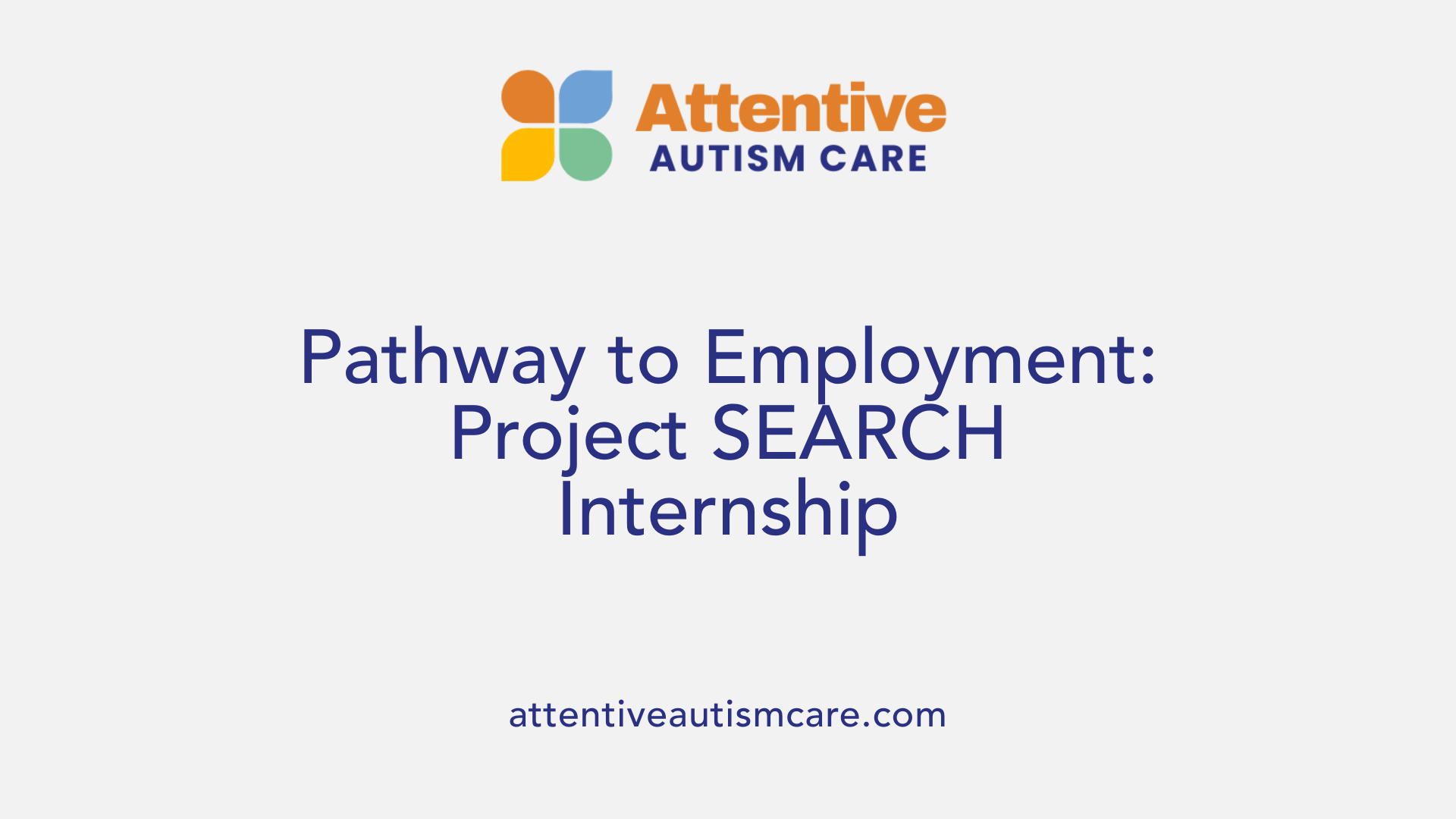
What is the structure and duration of the 9-month internship?
Project SEARCH is an intensive, 9-month internship program specifically designed to support youth with autism spectrum disorder as they transition into adulthood. The program combines real-world work experience with tailored instruction, offering a comprehensive pathway toward employment. Over this period, participants engage in a mix of hands-on work training and skill-building activities that prepare them for the workforce.
How does Project SEARCH integrate with community-based businesses?
A defining feature of Project SEARCH is its embedding within community-based businesses. Internships take place directly in these businesses, allowing youth to gain practical experience in authentic work environments. This integration not only facilitates skill development but also helps build connections and networks that can lead to future employment opportunities.
What employment outcomes have been demonstrated?
Studies highlight that youth who participate in Project SEARCH have significantly higher employment rates compared to their peers in control groups. The program's structure, combining vocational training with ASD-specific supports such as applied behavior analysis strategies, contributes to these positive outcomes by addressing the unique needs of individuals on the autism spectrum.
Who does Project SEARCH primarily focus on?
The program primarily targets youth transitioning to adulthood, a critical period when individuals with autism often face challenges in securing employment. By equipping these young adults with skills, experience, and confidence, Project SEARCH facilitates a smoother transition into independent working life and improved long-term job prospects.
Integrating ABA-Based Supports into Vocational Training
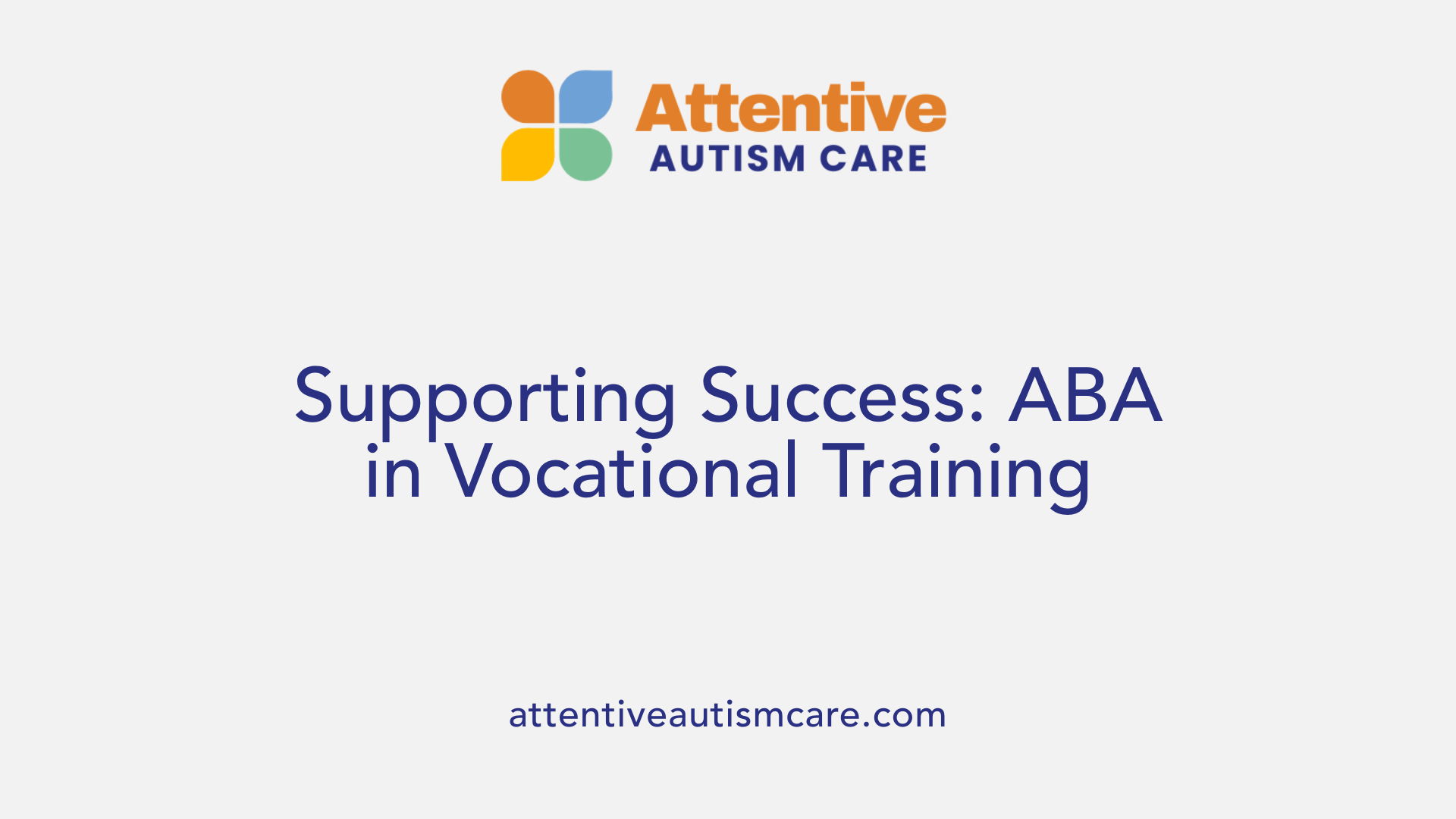
How Are ABA Strategies Used Within Project SEARCH?
Applied Behavior Analysis (ABA) strategies are systematically integrated into Project SEARCH, a widely recognized vocational training program for individuals with autism spectrum disorder (ASD). These strategies focus on reinforcing positive work behaviors, breaking down tasks into manageable steps, and providing consistent feedback. ABA techniques such as task analysis and data-driven monitoring help participants learn and maintain skills crucial for successful job performance.
How Do Autism-Specific Supports Enhance Employment Outcomes?
Incorporating autism-specific supports into vocational training notably increases employment outcomes. For instance, when Project SEARCH includes ABA-based methods tailored to autism, participants demonstrate improved job acquisition and retention rates compared to standard approaches. This customization ensures that challenges unique to autism, like social communication difficulties and adapting to new routines, are effectively addressed.
What Is the Role of Behavioral Analysis and Positive Reinforcement?
Behavioral analysis plays a key role in understanding each individual's strengths and areas for improvement within a vocational setting. Positive reinforcement is applied to encourage the development and maintenance of desirable work behaviors, such as punctuality, task completion, and social interactions with coworkers. This approach helps build confidence and promotes consistent engagement in the workplace.
How Are Programs Customized to Meet Individual Needs?
Vocational programs that integrate ABA supports are designed with flexibility to tailor interventions for each participant's unique profile. This customization may include adjusting the intensity of supports, modifying tasks based on skill levels, and incorporating preferred interests to boost motivation. Such personalized approaches contribute to better employment stability and satisfaction.
| Aspect | ABA-Based Approach | Impact on Employment |
|---|---|---|
| Task Teaching | Task analysis with step-by-step instruction | Enhanced skill acquisition and independence |
| Behavior Monitoring | Data collection and performance tracking | Objective progress evaluation and timely intervention |
| Reinforcement | Positive reinforcement tailored to individual motivators | Increased engagement and consistency in job tasks |
| Social Skills Support | Targeted social skills training and cues | Improved workplace relationships and communication |
| Customization | Individualized plans based on assessments | Higher employment success and job satisfaction |
Virtual Reality Job Interview Training (VR-JIT): Innovative Employment Support
How does virtual reality enhance interview skills for individuals with autism?
Virtual Reality Job Interview Training (VR-JIT) uses immersive simulations to help individuals with autism practice responding to common interview questions. This technology offers a safe, controlled environment where users can repeatedly experience and improve their interview performance without real-world pressures.
What impact does VR-JIT have on employment rates among people with ASD?
Studies included in recent reviews show that engaging in VR-JIT significantly boosts the employment prospects of autistic individuals. By improving interview confidence and communication skills, VR-JIT helps participants secure job opportunities more effectively.
What makes technology-based training like VR-JIT advantageous?
VR-JIT’s interactive approach aligns well with personalized learning, providing instant feedback and allowing users to learn at their own pace. It complements hands-on experience and addresses social and communication challenges common in ASD.
How does VR-JIT complement existing vocational programs?
VR-JIT serves as an important supplement to traditional job coaching and vocational training when paired with programs like Project SEARCH. While Project SEARCH offers community-based internships and on-the-job support, VR-JIT specifically targets the crucial interview phase, enhancing overall employment success for autistic adults and youth.
Effectiveness and Evidence of Employment Interventions for Autism
What do randomized controlled trials reveal about employment interventions for ASD?
Three randomized controlled trials (RCTs) focused on employment interventions for adults and transition-age youth with autism spectrum disorder (ASD) were identified. These trials provide some of the most rigorous evidence available regarding which programs are effective in supporting employment outcomes for this population.
What evidence supports programs like Project SEARCH and VR-JIT?
Project SEARCH, a 9-month internship program embedded in community businesses, has demonstrated significant positive effects on employment rates among youth with ASD compared with control groups. When augmented with autism-specific supports, such as applied behavior analysis (ABA) strategies, these outcomes improve even further.
Virtual reality job interview training (VR-JIT) is another promising intervention from the reviewed trials. It helps individuals with ASD develop skills and confidence for the job interview process, leading to better employment prospects.
How do these programs impact employment outcomes for individuals with ASD?
The evidence indicates that vocationally focused programs like Project SEARCH and VR-JIT have substantial positive impacts on the ability of persons with ASD to obtain and maintain employment. These programs provide real-world work experiences, soft skills development, and tailored supports that increase job readiness and self-esteem.
What are the limitations of the current research?
While the available studies show encouraging results, the overall quantity of high-quality trials is limited. More extensive and rigorous research is needed to validate these findings, explore additional approaches, and refine best practices for employment interventions targeting individuals with ASD.
Challenges and Barriers Faced by Autistic Adults in the Workplace
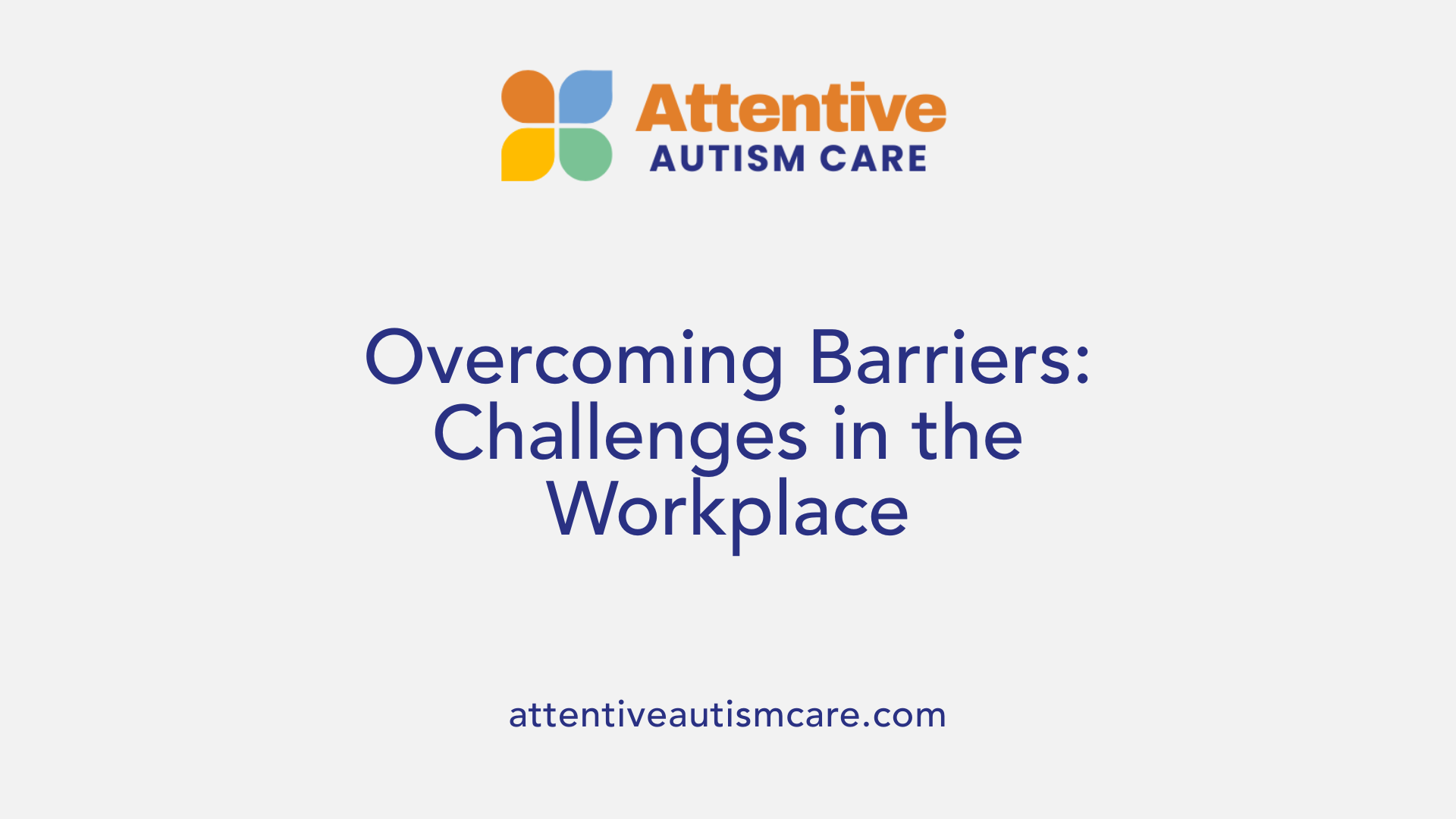
What Are Common Obstacles Such as Social Communication Difficulties?
Many autistic adults face challenges with social communication in the workplace. These can include difficulties interpreting social cues, understanding unwritten social rules, and initiating or maintaining conversations. Such challenges may affect team collaboration and networking opportunities, which are often essential for career advancement.
How Do Sensory Sensitivities and Environmental Challenges Impact Work?
Sensory sensitivities commonly affect autistic individuals, making typical workplace environments—often noisy, brightly lit, or bustling—feel overwhelming. These sensory issues can lead to increased stress, reduced focus, and even physical discomfort, which can hinder work performance and job satisfaction.
Why Is There a Need for Individualized Workplace Accommodations?
Autistic adults benefit greatly from workplace accommodations tailored to their unique needs. Examples include flexible scheduling, noise-cancelling headphones, quiet workspaces, clear communication methods, and structured routines. Personalized accommodations help create an inclusive environment that supports productivity and well-being.
How Can Addressing Stigma and Employer Education Improve Outcomes?
Stigma and misconceptions about autism often result in biases that limit employment opportunities. Educating employers about autism spectrum disorder and promoting acceptance can reduce stigma. Increased awareness helps foster supportive attitudes and policies, encouraging more inclusive hiring and retention practices.
| Challenge | Description | Impact on Workplace |
|---|---|---|
| Social Communication Difficulties | Trouble with social cues and interactions | Affects teamwork and relationships |
| Sensory Sensitivities | Sensitivity to noise, light, and crowds | Leads to discomfort and distraction |
| Need for Accommodations | Requirement for personalized adjustments | Enhances productivity and comfort |
| Stigma and Lack of Education | Misconceptions and biases towards ASD | Limits opportunities and acceptance |
Tailoring Employment Programs to Individual Strengths and Needs
Assessment of Abilities and Preferences
Effective independent living and employment programs for individuals with autism start with a thorough assessment of each person's abilities, interests, and preferences. This evaluation helps identify strengths and areas needing support, ensuring that educational, vocational, and social components align with individual goals and aspirations.
Flexibility in Program Design
Programs must maintain flexibility to address the unique needs of each participant. Customizing components such as life skills training, job coaching, and leisure activities allows the development of practical, personal plans. For example, vocational training may involve individualized placements that match the person’s talents while promoting growth.
Use of Personalized Behavioral and Vocational Goals
Setting tailored behavioral and vocational objectives supports meaningful progress. Techniques like applied behavior analysis (ABA) integrated into internship models, such as Project SEARCH, illustrate how personalized goals can deepen skill acquisition and boost employment success.
Enhancement of Motivation and Engagement
Maintaining motivation and engagement is crucial. Strategies include incorporating enjoyable leisure activities that encourage decision-making and community involvement, as well as providing peer support and counseling. These approaches build self-esteem and create a positive learning environment, increasing the likelihood of sustained participation and achievement.
This individualized approach ensures that employment programs are not only supportive but also empowering, fostering independence and self-confidence in adults with autism.
Role of Caregivers and Community in Supporting Employment Success
How do families contribute to training and transition planning?
Family involvement plays a crucial role in training and transition planning for individuals with autism spectrum disorder (ASD). Caregivers often provide essential support by helping tailor education and vocational plans to the individual’s unique needs and strengths. They assist with goal setting, reinforce life and social skills at home, and collaborate with professionals to ensure smooth transitions from school to work environments.
In what ways do community partnerships enhance work experience?
Community partnerships are vital for creating real-world vocational opportunities. By partnering with local businesses, organizations can offer internships and on-the-job training such as the Project SEARCH model, which embeds individuals with ASD into community-based workplaces. These partnerships expand access to meaningful employment experiences, increasing the likelihood of sustained employment.
What kind of support is available beyond initial employment?
Continued support after securing a job is essential for long-term success. Services such as job coaching, ongoing skills training, and peer support groups help individuals maintain employment and adapt to workplace challenges. This sustained assistance often includes strategies developed through applied behavior analysis (ABA) tailored to workplace demands.
How do collaborative networks promote sustained success?
Collaborative networks that include caregivers, service providers, employers, and community agencies foster coordinated efforts to support individuals with ASD. These networks facilitate communication, resource sharing, and consistent support across different life domains, enhancing personal growth, employment retention, and community integration.
Through the combined efforts of families and community partners, employment programs become more effective and sustainable, helping individuals with ASD lead successful and fulfilling working lives.
Soft Skills Development: The Key to Workplace Integration
Why Are Communication, Teamwork, and Problem-Solving Skills Crucial?
For adults with autism, success in employment hinges not only on technical skills but also on the mastery of soft skills. Communication helps individuals express ideas clearly and understand instructions. Teamwork fosters collaboration and builds supportive relationships on the job. Problem-solving equips employees to navigate challenges independently and efficiently.
How Do Individuals Learn About Workplace Norms and Social Expectations?
Understanding the social fabric of the workplace is essential. Individuals with autism are guided to recognize unwritten rules such as appropriate greetings, body language interpretation, and timing for speaking during meetings. Familiarity with these cues supports smoother interactions with colleagues and supervisors.
What Training Methods Enhance Soft Skills?
Effective programs use a combination of job coaching, role-playing scenarios, and applied behavioral strategies tailored for autism spectrum disorder. Group activities and peer support also provide natural settings to practice social skills. Technologies like virtual reality job interview training (VR-JIT) simulate real workplace situations, allowing skill rehearsal in a safe environment.
What Is the Impact of Soft Skills Development on Job Retention and Satisfaction?
Enhancing soft skills not only improves employment rates but also contributes significantly to job satisfaction and retention. Employees who can communicate effectively and navigate social expectations tend to experience better workplace integration and higher self-confidence, reducing turnover and promoting long-term career growth.
Use of Assistive Technology to Enhance Workplace Competencies
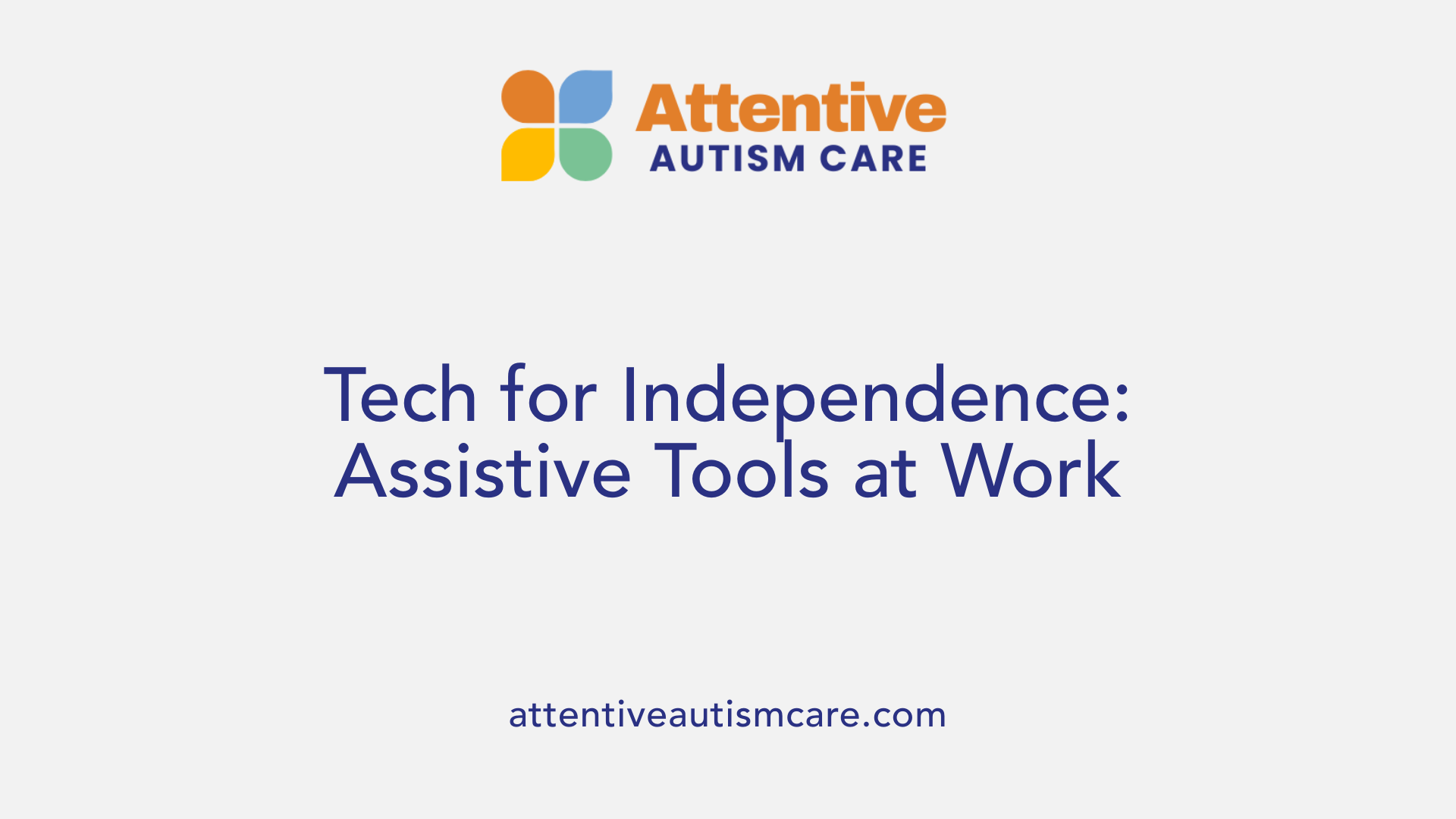
Tools supporting communication and organization
Assistive technology plays a vital role in helping individuals with autism spectrum disorder (ASD) succeed in the workplace. Communication tools such as speech-generating devices and visual supports enable clearer interactions for those who face verbal challenges. Organizational apps help manage tasks and prioritize work responsibilities, reducing stress and confusion.
Technology for scheduling and reminders
Scheduling applications and electronic reminder systems are essential for keeping track of appointments, deadlines, and daily tasks. These technologies promote time management and help individuals stay on task without constant supervision, fostering greater independence.
Virtual platforms for training and coaching
Virtual reality job interview training (VR-JIT) has shown promising results in preparing individuals with ASD for employment. These immersive platforms simulate real-life scenarios allowing users to practice social cues and job-related skills in a controlled environment. Additionally, online coaching tools provide tailored guidance remotely, enhancing personalized skill development.
Enabling independence and efficiency
Combined, these technologies empower autistic workers to navigate workplace demands confidently. Assistive technology supports incremental learning, reduces anxiety related to job tasks, and enhances overall efficiency. By integrating these tools into individualized employment plans, programs facilitate smoother transitions into meaningful careers and promote sustained success.
Promoting Self-Esteem Through Employment Success
How does work connect to personal identity for individuals with autism?
Work often serves as a significant part of an individual's personal identity and self-worth. For people with autism spectrum disorder (ASD), gaining meaningful employment can foster a sense of belonging and purpose. Successful engagement in jobs tailored to their strengths allows them to see themselves as capable and valuable contributors to their communities.
How is confidence built through achievement in employment?
Achieving success in work settings, whether through internships like Project SEARCH or participation in vocational programs, helps individuals with ASD build confidence incrementally. Real-world job experiences and skill mastery offer tangible proof of their abilities. Each accomplishment reinforces their self-belief and motivates further growth.
What role do positive reinforcement and counseling play?
Positive reinforcement strategies, including applied behavior analysis (ABA), are essential in supporting employment success and boosting self-esteem for people with autism. Counseling and group activities provide emotional support, helping individuals interpret social cues, manage workplace challenges, and celebrate achievements. These approaches foster resilience and enhance self-confidence.
What are the long-term benefits of employment on mental health?
Sustained employment can lead to improved mental health by reducing isolation and increasing social engagement for individuals with ASD. Work provides structure, purpose, and opportunities for social connection, which contribute to greater emotional well-being and reduced anxiety. In this way, employment is not only an economic goal but a foundation for lifelong self-esteem and psychological health.
| Aspect | Description | Impact on Self-Esteem |
|---|---|---|
| Work and Identity | Employment as a source of belonging and purpose | Fosters sense of value |
| Achievement in Work | Success in real-world tasks | Builds confidence incrementally |
| Positive Reinforcement | Use of ABA and counseling to support workplace skills | Enhances motivation and resilience |
| Mental Health Benefits | Improved social connection and reduced anxiety | Sustains long-term emotional well-being |
Natural Environments as Ideal Settings for Skill Generalization
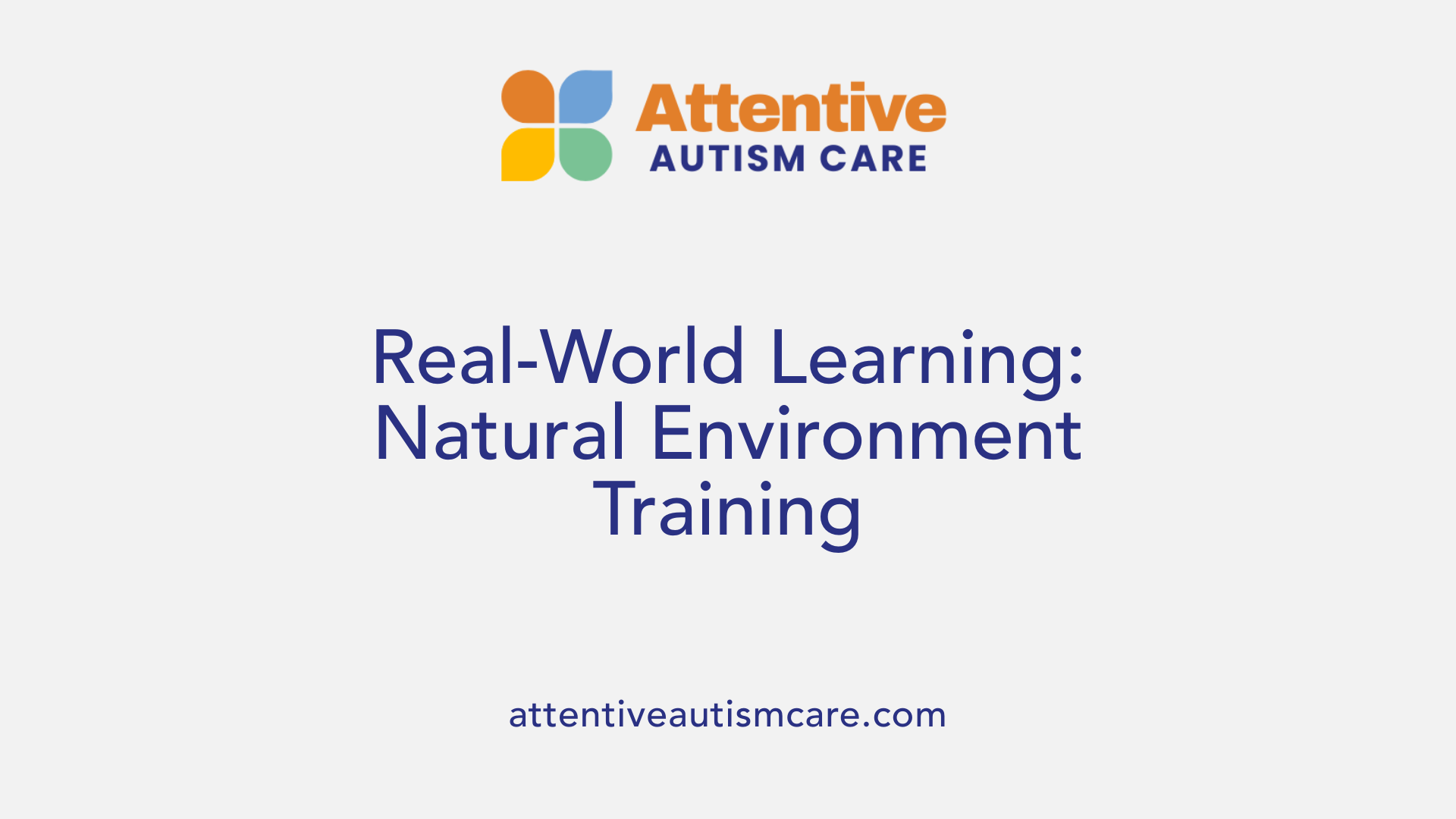
Applying Training in Real-World Contexts
Independent Living Programs for individuals with autism emphasize the importance of hands-on, incremental instruction delivered in natural environments. Training in real-world contexts—such as community settings—allows individuals to practice vital skills like money management, cooking, shopping, organization, and transportation where these tasks naturally occur.
Benefits of Community-Based Learning
Learning within the community supports the development of functional skills in authentic situations, which enhances relevance and motivation. For example, practicing grocery shopping at a local store or using public transit for travel strengthens both competence and confidence.
Generalization of Skills Across Settings
Training in natural environments promotes the generalization of skills across different settings and situations. When individuals with autism learn in the places where they will actually use their skills, they are more likely to adapt effectively and maintain independent behaviors over time.
Reducing Barriers to Independence
By removing artificial or clinical barriers and teaching life skills within everyday environments, these programs reduce obstacles to independence. This approach aligns with best practices in autism support by fostering practical success that translates seamlessly into daily living and employment contexts.
Overall, natural environment training is a critical strategy within Independent Living Programs, delivering meaningful learning experiences that enhance skill retention and independence for individuals with autism spectrum disorder.
The Need for Continued Research and Rigorous Trials in Employment Interventions
What Are the Current Evidence Gaps in Autism Employment Support?
Despite promising outcomes from programs like Project SEARCH and virtual reality job interview training (VR-JIT), the body of evidence remains relatively limited. Only a handful of randomized controlled trials (RCTs) have been conducted to date, leaving many questions unanswered about the most effective methods and which components yield the strongest employment outcomes for individuals with autism spectrum disorder (ASD).
Why Are Randomized Controlled Trials Important?
RCTs are the gold standard in evaluating intervention effectiveness because they minimize bias and allow for clear comparisons between program recipients and control groups. The few RCTs available have provided valuable insights but underscore the necessity for more well-designed trials. Such rigorous studies are critical for confirming findings, refining best practices, and ensuring that resources are directed toward interventions with proven impact.
How Can Program Design and Implementation Be Improved?
Ongoing research can guide enhancements by identifying which elements of existing programs—such as ASD-specific supports, applied behavior analysis strategies, or real-world vocational experiences—most significantly contribute to success. Improved program design informed by robust data can then target not only employment rates but also quality of employment, worker satisfaction, and long-term career development for individuals with ASD.
What Is Needed to Increase Scalability and Effectiveness?
To extend the reach of effective interventions, research must explore how programs can be adapted across diverse settings and populations. Understanding how to maintain fidelity while tailoring services will increase program scalability. Additionally, studies focusing on cost-effectiveness, stakeholder involvement, and use of technology will help maximize the impact and sustainability of employment support initiatives for individuals with autism.
Continued investment in high-quality research and rigorous trials will be vital to advancing our knowledge and ensuring employment programs deliver meaningful, lasting benefits to adults and transition-age youth with ASD.
Future Directions: Innovative Approaches to Supporting Autistic Adults at Work

Emerging technologies and methods
Innovative tools like virtual reality job interview training (VR-JIT) are gaining attention in employment support for autistic adults. VR-JIT provides a safe, controlled environment to practice interviews, enhancing communication skills and confidence. Such technology-based interventions can offer scalable, personalized learning experiences that improve employment outcomes.
Personalized, strength-based program models
Future programs are moving towards individualized approaches that build on the unique strengths of each person with autism. Models integrating vocational training with tailored support, such as Project SEARCH combined with applied behavior analysis (ABA), demonstrate improved job placement rates. Emphasizing personal abilities fosters self-esteem and long-term employment success.
Integration of mental health and vocational services
Recognizing the overlap of mental health needs with employment challenges, emerging programs aim to blend vocational training with mental health support. This integration addresses stress, anxiety, and social difficulties that can affect work performance, offering a holistic pathway to sustained employment.
Advocacy and policy development
Advancements in employment for autistic adults also depend on policy reforms and advocacy efforts. Promoting inclusive hiring practices, funding for specialized support programs, and workplace accommodations can create broader opportunities. Increased awareness among employers and communities is essential to drive systemic change.
Together, these innovative directions highlight a future where technology, personalized care, integrated services, and advocacy combine to enhance employment support. Continued research will be crucial to refine these approaches and expand successful outcomes for adults with autism.
Building Brighter Futures Through Empowered Employment
Supporting autistic adults in building workplace skills is a multi-faceted effort that combines evidence-based therapies like ABA with comprehensive independent living programs and innovative vocational training models such as Project SEARCH and VR-JIT. Tailored interventions that address individual needs, incorporate caregivers, and focus on social and life skills development are key to fostering meaningful employment and personal growth. Although research in this field is still evolving, the current evidence highlights the promise of these programs in enhancing employment outcomes and quality of life. Continued investment in rigorous research, technology, and community collaboration will further empower autistic adults to thrive in the workforce and lead fulfilling, independent lives.





































































